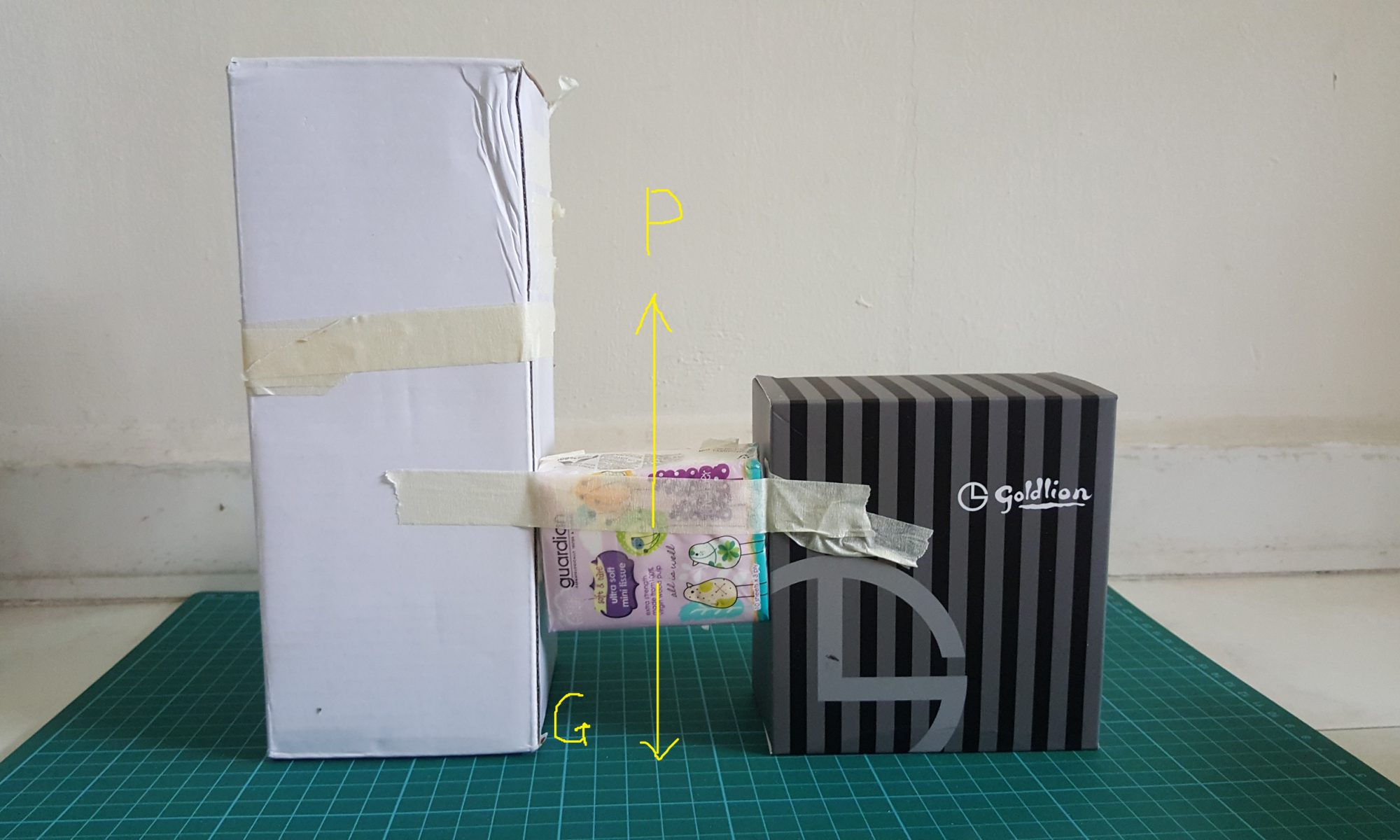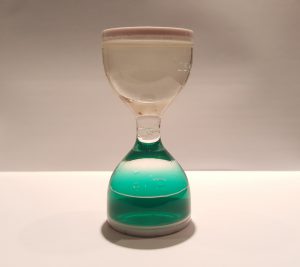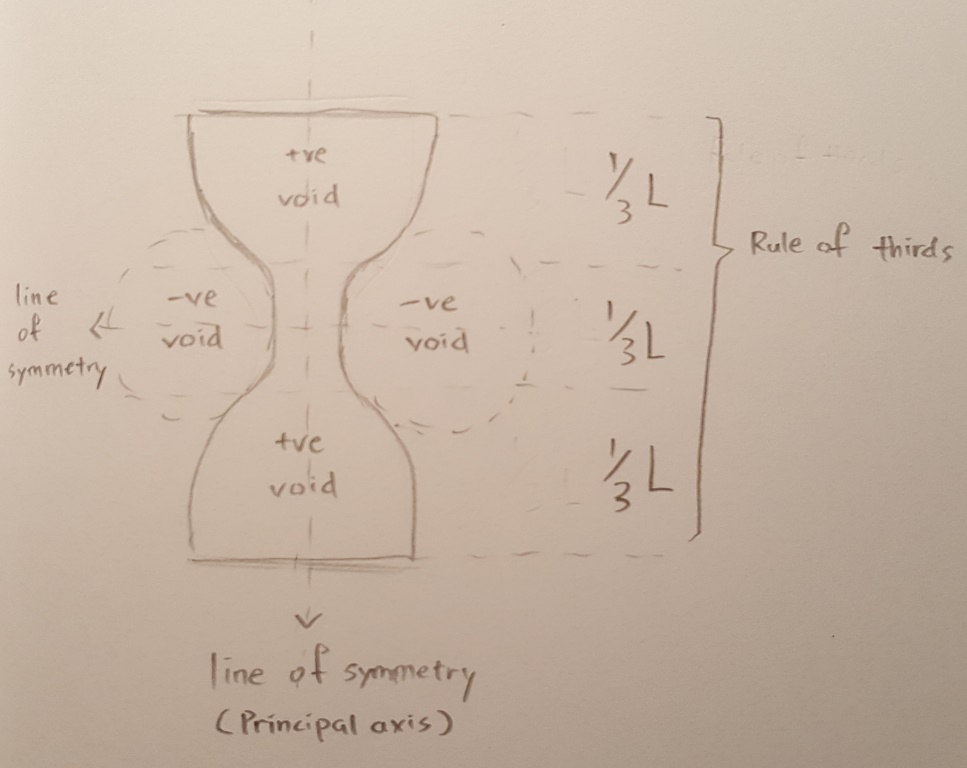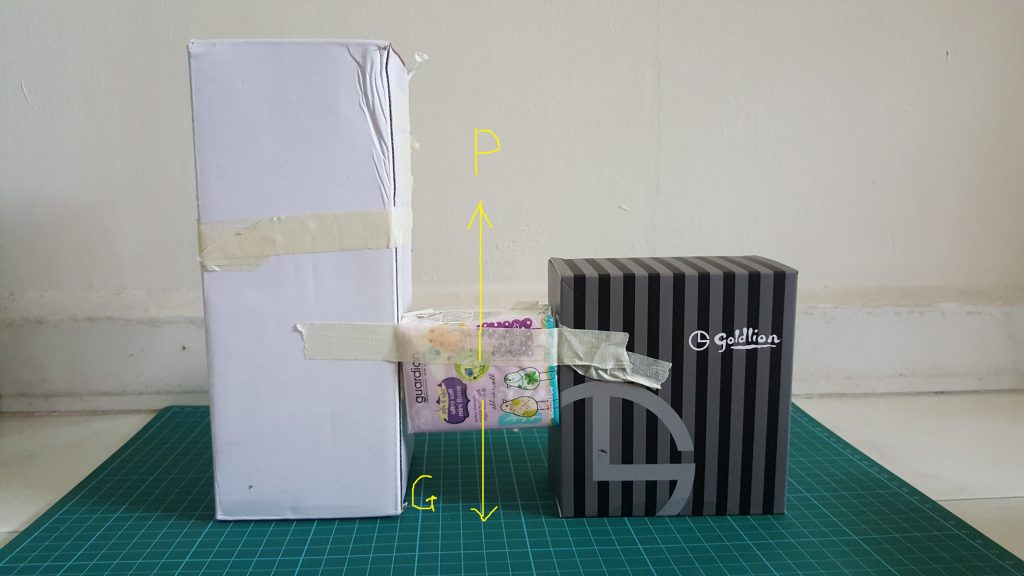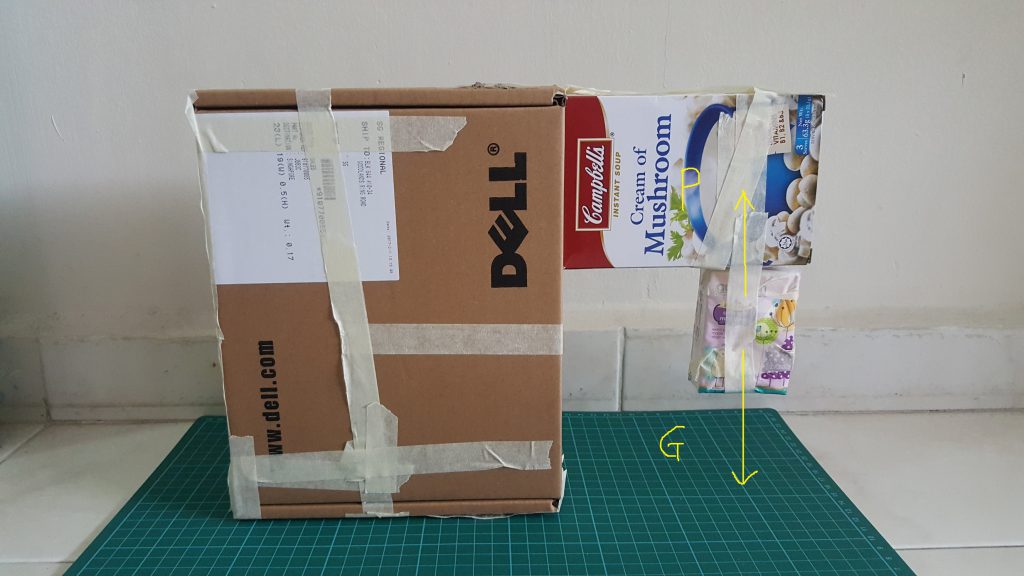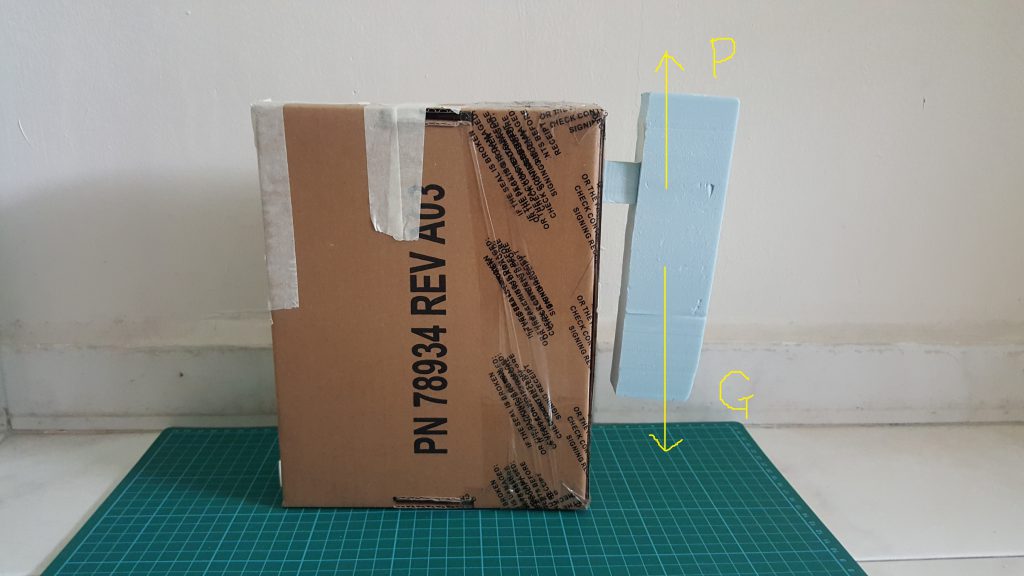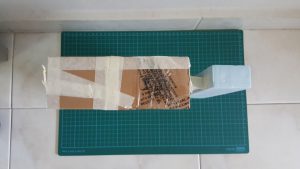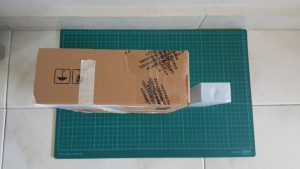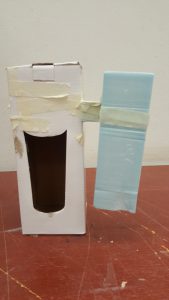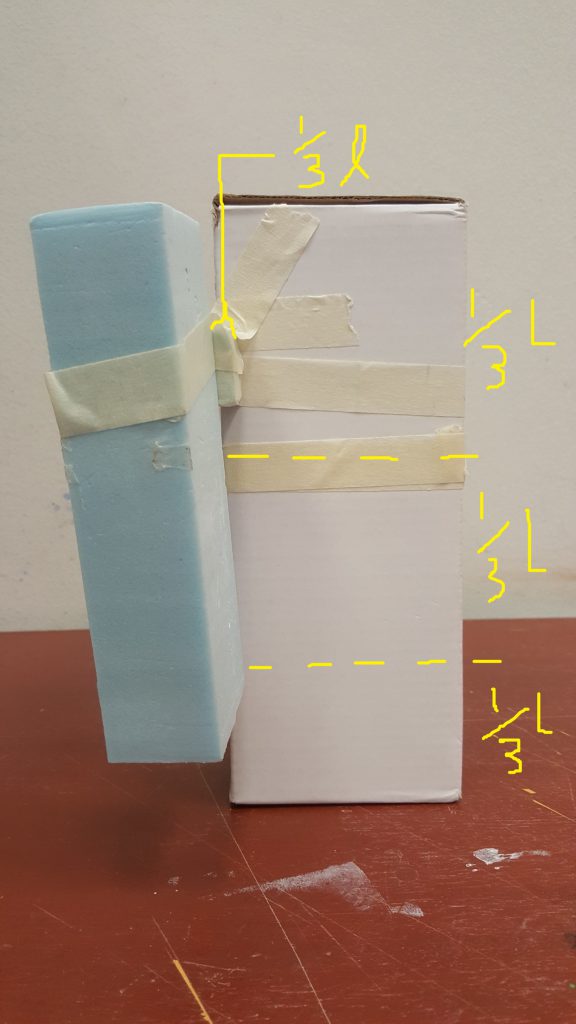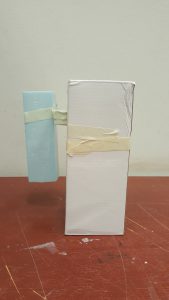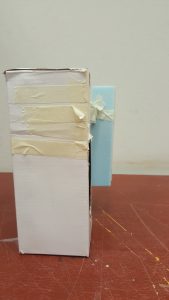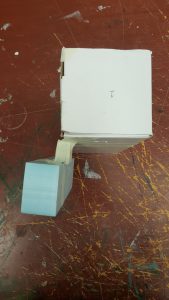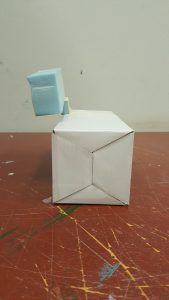So my given word for the project was “Tension”, and here is the finished model to express that word:
Finished Project 1 3D Model:






Project 1 2D Sketch Analysis:

Rule of Thirds:
- The Sub-Dominant has length of 2/3 of that of the Dominant
- The Sub-Ordinate has 1/3 of its length wedged into the Dominant and Sub-Dominant
- The Sub-Ordinate is positioned at the 1/3 point of the Dominant’s length

Rule of Thirds:
- The Sub-Ordinate is wedged at the 1/3 point of its length into the Dominant and Sub-Dominant
Materials used for 3D model:

- Dominant : Corrugated plastic board
- Sub-Dominant : Crumpled Paper
- Sub-Ordinate : Wire Mesh
Explanation:
- Dominant: White corrugated plastic board is utilized to mimic the work fence of a construction site
– Sets the tone of the 3D Model to that of a building being built
- Sub-Dominant: Crumpled paper with it’s surface shaded with a pencil is used to create a surface akin to that of rock
– Rock surface gives the impression that the Sub-Dominant is heavy
- Sub-Ordinate: Wire mesh is deployed to create a view of metal construction frames jutting out of the Dominant ‘building’
– Sub-Ordinate holding onto the heavy Sub-Dominant ‘rock’
– Cracks are cut into the Dominant ‘building’ to emphasis the weight of the sub-Dominant ‘rock’
Process of creating final Project 1 3D Model:

Initial attempt to make the Sub-dominant look heavy was by using crumpled black paper.
But it didn’t look heavy so,

I decided to using pencil shadings to create the surface of a rock instead.

I was initially planning to have the Dominant and Sub-Ordinate white in color, and the Sub-Dominant black to create focus on the Sub-dominant.
However,

when it came to the idea of creating cracks on the Sub-Ordinate to make the Sub-Dominant appear heavy,
the Sub-ordinate was too small.
Thus, a revamp of all of the materials was done



and the final 3D product was formed.

Explanation:
Gravity is pulling down the rock but the wire frame of the building is holding it up and keeping it from falling.
There is thus 2 opposing forces acting on the rock which exhibits the phenomenon which is ‘Tension’
Applications
Small-scale application: Portable fan

https://besplatka.ua/aws/10/33/78/00/app/b851a2dcf0c7.jpg
Dominant: Body
Sub-Dominant: Rotating blade
Sub-Ordinate: Bridge supporting blade
Big-scale application: Spaceship

https://www.shutterstock.com/video/clip-3750389-stock-footage-the-sun-rising-over-the-earth-in-space.html http://pre14.deviantart.net/3599/th/pre/f/2007/133/d/7/ogame_space_ship_wallpaper_by_tobioh.jpg
https://i.pinimg.com/originals/d6/62/92/d662924667082ed89811e337ab4d8a73.jpg
http://www.scifiideas.com/wp-content/uploads/2014/10/SPACESHIP.jpg
Dominant: Main frame of spaceship
Sub-Ordinate: Bridge linking towards cannon
Sub-Dominant: Cannon

